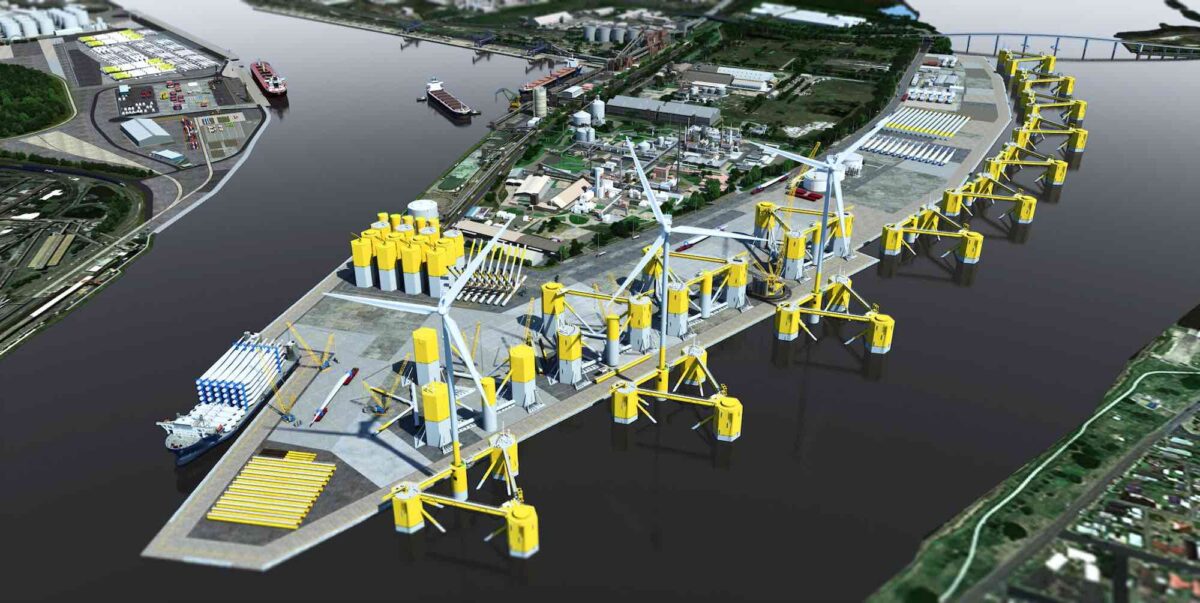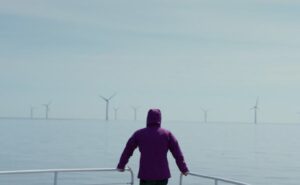One of the world’s biggest coal ports, the Port of Newcastle in New South Wales, has put its hand up to become an offshore wind hub, to service the up to 5 gigawatts of floating turbine projects expected to – one day – populate the Hunter development zone.
The Port of Newcastle (PON), which is 50/50 owned by Macquarie’s The Infrastructure Fund and China Merchants Port Holdings Company, said on LinkedIn this week that a new study has confirmed it as a “prime candidate” to support floating offshore wind (FOW) deployment.
The Hunter offshore wind zone, Australia’s second declared development zone, is a nearly 2,000km square area in the Pacific Ocean, which stretches over 1,800km2 between Swansea and Port Stephens, and will be the first in Australia to host floating turbines.
PON says that its “deep draft navigation channel, available development area, and absence of bridge infrastructure” make it highly suitable for a role as an offshore with hub. A study was commissioned to identify the quantity and size of new facilities that might be needed.
“The study indicated that with investment and appropriate stakeholder consultation, the PON has the physical characteristics to support the FOW industry in New South Wales (NSW) and the wider Australasia region,” a statement says.
The PON says a re-imagined offshore wind hub – rendered above – would serve a variety of functions for the industry, including marshalling, assembly, staging and operations and maintenance.
“This strategic development has the potential to not only establish the port as a central hub for floating wind projects in the Australasia region, but also to attract Original Equipment Manufacturers (OEMs) for both floating and fixed-bottom wind developments,” PON says.
The study notes the port’s “strategic proximity” to the declared Hunter offshore wind zone, as well as to the proposed Illawarra wind development zones, also in NSW, and other development zones in New Zealand and Victoria, with Bass Strait only a two-day ocean transit.
PON’s bid to become a key part of Australia’s nascent offshore wind industry comes as Victoria’s main contender, the Port of Hastings, had its development plans sent back to the drawing board by federal environment minister Tanya Plibersek.
But the task to set up a central port facility for offshore wind is several degrees more urgent in Victoria, with the first project hoped to be delivering power by 2028, in line with the state’s targets of 2GW of offshore wind generation by 2032, 4GW by 2035 and 9GW by 2040.
The timeline is far less clear for the NSW Hunter zone, which offers much less room to move for developers than Victoria’s Gippsland zone, and a more expensive and less tested form of the technology, in floating turbines.
Among the developers seeking feasibility licences to advance their Hunter zone plans are Australia-based Energy Estate, which is working up the 1.65GW Hunter Central-Coast Offshore Energy project.
A 2GW project is being proposed by OceanEx and Equinor, as well as the biggest floating wind project proposed for Australian waters yet – the up to 10GW Newcastle Offshore Wind project, now owned by French nuclear giant EDF.
Expressions of interest for feasibility licences closed at the end of last year.








